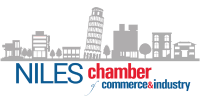Starting a new business is like pouring concrete: every early decision sets the foundation. And few decisions are more concrete than hiring. Those first few people don’t just carry tasks — they shape your company’s rhythms, reinforce your judgment, and often absorb the friction that comes with early growth. Hiring isn't just a logistical necessity; it’s a multiplier. Done right, it helps your venture breathe and move. Done wrong, it burdens you with repair work that stalls progress. So how do you attract the kind of talent that scales with you, not against you? And how do you do it without opening your business up to unnecessary risk?
Build Hiring Around Candidate Experience, Not Just Your To-Do List
It’s tempting to write a job description that reads like your personal wish list. But if your hiring process centers only on what you want, you’ll miss out on what the right candidates need to hear. That means writing clear roles, yes — but also shaping a journey that reflects your values and clarity. The process itself signals what kind of leader you are. That’s why refining how candidates experience your brand is one of the most overlooked leverage points when you’re hiring early. From first touch to final conversation, the way you communicate expectations, respond to questions, and present your company's purpose will either attract high-agency people or quietly repel them.
Reduce Risk by Using Process, Not Gut
New founders often rely on instinct because they don’t have a system yet. That’s understandable — but dangerous. Intuition without structure leads to inconsistent results, and worse, it creates a feedback loop that’s hard to diagnose. The fix? Build a basic process. Use checklists, structured interviews, and job scorecards. These don’t eliminate your judgment — they sharpen it. When you’re consistent across candidates, patterns emerge. Red flags become clearer. Gaps in your own criteria show up. And most importantly, you start using structured steps to reduce uncertainty.
Embrace Tools That Handle Multilingual Hiring Smoothly
If you’re hiring remote or contracting across time zones, odds are you’ll meet candidates whose first language isn’t yours. This is not a barrier — it's an opportunity. What slows things down isn’t difference; it’s misunderstanding. There are platforms that handle multilingual interviews natively, which means you can stop fumbling through laggy Zoom calls and start connecting clearly. Some of these platforms offer real-time translation overlays, subtitled playback, and even AI-driven candidate summaries across languages. By solving this early, you widen your talent pool and eliminate one of the most common friction points in global-first hiring.
Use Audio Tools That Improve Training, Not Just Translation
When you're onboarding across languages, the cost of repeating yourself isn't just time — it's trust. Early teams don’t have bandwidth for six versions of the same walkthrough. But they also can’t afford confusion. That’s where using an audio translator as educational tool changes the game. You get one clean version of your training, instantly accessible to every new hire, no matter what language they speak. Less backtracking. Fewer misunderstandings. And a faster path to contribution.
Hire for Fit That Lasts, Not Just the Role That’s Open
It’s easy to hire someone who “can do the job.” But the better question is: can they grow with the job? Your first hires need to scale with you. That means looking for people with learning velocity, not just résumé matches. A simple shift in your strategy — from reactive posting to proactive outreach — can change the caliber of your funnel. Consider adopting strategies that support sustainable recruiting, including employee referral loops, culture-first narratives, and interview questions that map to growth behavior. The goal isn’t to fill a seat. It’s to set the stage.
Use Assessments to Cut Through the Noise
In a world where résumés can be inflated by AI and interviews sometimes favor performative confidence, assessments bring you back to truth. You need to know how a person thinks, not just how they speak. More teams are leveraging pre-hire assessments to identify genuine talent, especially for cognitive reasoning, values alignment, and practical skills. These tools aren’t just about filtering out bad fits — they’re about discovering surprising ones.
Hiring well is not about perfection. It’s about pattern-building. It’s about learning to read people, spot signals, and create systems that don’t betray your instincts — but help them scale. The best teams aren’t assembled by accident. They’re built by leaders who understand that early hires are culture carriers, risk multipliers, and the fastest way to either accelerate or sabotage growth. Don’t treat hiring like a checkbox. Treat it like product development. Test. Iterate. Learn fast. And above all, stay human.
This Hot Deal is promoted by Niles Chamber of Commerce and Industry.

